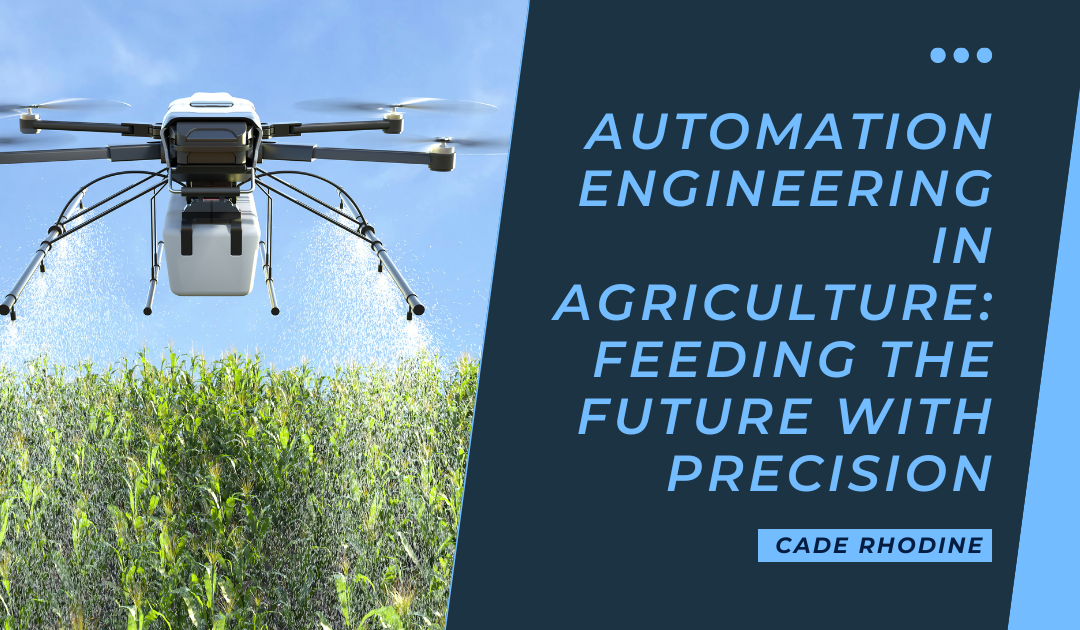Agriculture, the backbone of human civilization, is undergoing a transformative shift. With a rising global population, changing climate patterns, and shrinking arable land, the pressure to produce more food with fewer resources is more urgent than ever. Automation engineering in agriculture—commonly referred to as precision farming—is emerging as a powerful solution to this growing challenge.
Automation in agriculture leverages advanced technologies such as robotics, artificial intelligence, and data analytics to optimize farming practices. The goal is simple yet ambitious: to maximize yield while minimizing resource use and environmental impact. This new wave of smart farming is not just about efficiency; it’s about creating a sustainable agricultural system capable of feeding billions in the years ahead.
One of the most visible applications of automation in agriculture is the use of autonomous tractors and harvesters. These machines can plow fields, plant seeds, apply fertilizers, and harvest crops with minimal human intervention. Equipped with GPS, sensors, and AI algorithms, they follow precise paths, adjust operations based on real-time data, and even avoid obstacles without manual control. This not only reduces labor costs but also ensures consistency and accuracy in farm operations.
Drones are another game-changing technology. They fly over fields, capturing high-resolution images and collecting data on soil health, crop growth, and pest activity. Farmers can use this data to make informed decisions about irrigation, fertilization, and pest control. Instead of treating entire fields uniformly, they can target specific areas—reducing waste and improving overall productivity. This site-specific approach, enabled by automation, is the essence of precision agriculture.
Sensors and Internet of Things (IoT) devices further enhance data-driven farming. Soil sensors monitor moisture levels, temperature, pH, and nutrient content. Climate sensors track weather conditions and predict changes. All this data is integrated into farm management systems powered by artificial intelligence, allowing farmers to respond proactively rather than reactively. For instance, an automated irrigation system can adjust water levels based on real-time soil moisture data, saving water and ensuring optimal crop growth.
Robotics in agriculture goes beyond large machinery. Smaller, mobile robots are being used for tasks like weeding, seeding, and harvesting delicate crops. These robots work 24/7, require minimal supervision, and can access areas where large equipment cannot operate. Some advanced systems use computer vision to identify weeds and remove them without harming crops, significantly reducing the need for chemical herbicides.
Post-harvest automation is another critical area. Sorting, grading, and packaging are now performed by automated systems that use machine learning and vision systems to evaluate quality and consistency. This not only improves food safety and reduces spoilage but also meets the high standards required by global markets.
The benefits of automation in agriculture are clear: increased productivity, reduced labor dependency, better resource management, and improved crop quality. However, these advances also come with challenges. High initial costs, the need for technical expertise, and infrastructure limitations can hinder widespread adoption, particularly in developing regions. Bridging this digital divide is essential to ensure that small and medium-scale farmers can also benefit from the automation revolution.
Sustainability is a key driver of this transformation. Automation enables farmers to practice conservation agriculture—using minimal tillage, cover cropping, and crop rotation—without sacrificing efficiency. It also helps monitor and reduce greenhouse gas emissions, manage water use more effectively, and protect biodiversity by reducing chemical use.
Looking to the future, the integration of AI, machine learning, and big data analytics will continue to enhance agricultural automation. Predictive modeling will allow farmers to forecast crop performance, detect diseases early, and plan better. Blockchain and traceability systems will add transparency to the food supply chain, from farm to fork.
In conclusion, automation engineering is revolutionizing agriculture by combining innovation with necessity. As global food demands rise and environmental pressures intensify, precision farming offers a way forward. With the power of automation, agriculture can become smarter, more sustainable, and better equipped to feed future generations.

